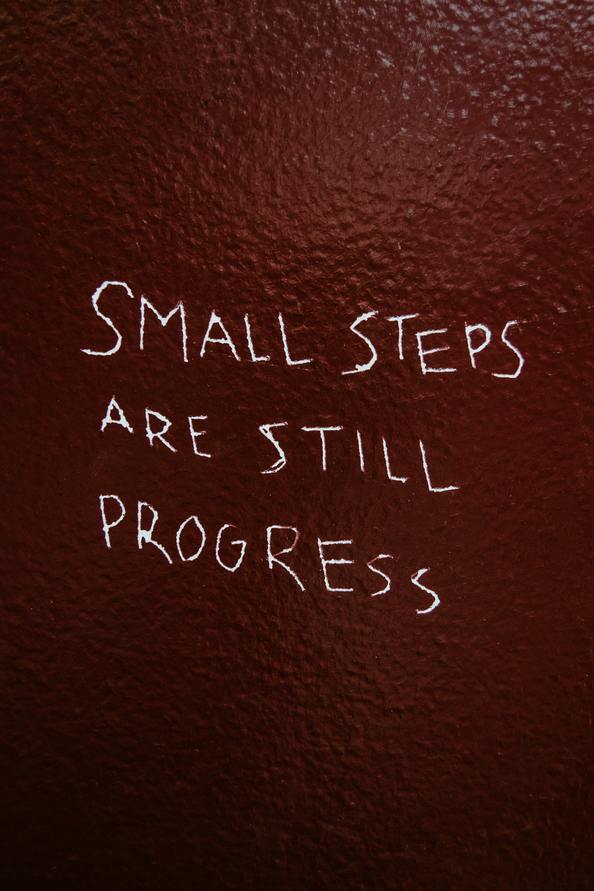In our world as Somatic Sex Educators & Sexological Bodyworkers, the body is the most important – and the most concrete – connection we hold to ourselves.
We don’t see the body as a static object. We understand that the body is much more than merely a skin suit that holds our essential Self.
Rather, we center the body as a living, dynamic intelligence that guides us if only we can learn to pay attention to – and to translate – its languaging.
In my personal view, I see our bodies as not only essential to guiding us toward our truth, but I take it a step further – I see our bodies as holy. The most sanctified gift we’ve ever been given. Bequeathed to us directly from Source/Creator Spirit/Goddess or God.
To me, learning to understand and being in communication with my body is an act of devotion, a spiritual task akin to prayer, that I offer to that over-arching spiritual intelligence some people call God but I merely call my higher Self.
As a one-time student of medicine, I studied a great deal on the anatomy and physiology of our bodies: how they work tirelessly to keep us in a state of homeostasis, or balance, despite the awful way we treat them and the less-than-holistic conditions we enact on them. I remember I left my schooling with a sense of wonder at the capability and incredible capacity for healing and overcoming intense obstacles the body displays.
Yet my view isn’t shared by many.
One of the greatest travesties of our modern day life is the way in which our communication and understanding of our body gets shut down through various cultural conditionings. Many of us live our life feeling disconnected from our body, distrustful or even ashamed of it.
It is a sad truth that there are entire industries reliant on our hatred or dissatisfaction with our body and who profit mightily from barraging us with message after message, overt and covert, telling us all the many reasons our bodies need “fixing” or modifying to be acceptable.
This creates a culture where disassociating from our bodies is normalized and we see our body as something outside of our Self, something apart from us, that is more often than not a source of embarrassment, shame or even disgust.

In SSE (somatic sex education), we invite you to cultivate a deeply integrated relationship with your body.
It’s not about devaluing your big, beautiful brain – but to instead re-condition the brain part of you to think with and through the body part of you.
And my oh my, it isn’t easy.
When you’ve been taught your whole life to scrutinize your body with a highly critical eye, constantly comparing it (unfavorably) with standards of perfection that are unattainable, the body can become a burden that you genuinely and passionately dislike.
Or perhaps you suffer from chronic pain and the disassociation is a conscious choice you make in an attempt to feel the pain less.
If we can teach ourselves, however, to see our own body not as an adversary to be overcome or a problem to be fixed or a troublesome machine to be tamed, but as a wise and friendly teacher, well then…we can choose to notice, feel, and connect with our bodies as the most fundamental of all our relationships.
This, dear reader, is how we do the work to become more embodied.
“Embodiment” has become a bit of a buzzword in fitness, therapeutic and spiritual circles. Everyone from your yoga teacher training instructor, to your therapist to your fitness coach speaks of it.
Yet no one speaks to the shadow of embodiment: when we open to our body’s messages, we will likely feel everything more clearly – and that includes our pain.
That is why this is such brave and powerful work. Everything we’ve fought our whole lives to repress, every way in which we try to hide and numb out and distract ourselves, gets brought up in full clarity.

The upside of this work is that we gain greater access to both pleasure and inner knowing, both of which are essential for us to thrive.
The objective of this blog, then, is to help you redefine your relationship with sensation.
Sensation is the language of the body and the practice of noticing sensations in our bodies is called somatic awareness.
For some (not me) the practice of cultivating somatic awareness will come easily, for others of us it will be the hardest thing we’ve ever done.
As my teacher Caffyn Jesse likes to remind, “Honor your personal pace and process. Remember that this is a practice, not a test, and give yourself permission to learn slowly.”
So here’s how you do it:
1. get curious - what can you notice?
First, pause. Slow that mustang down, Sally. Step out of the busyness of the thinking mind and get into a space of non-judgmental observance.
Then, differentiate between your thoughts, emotions and body sensations. Don’t try to suppress your thoughts or emotions, rather acknowledge each thing mentally to yourself, like you’re listing each thing off (ie: “thinking about the past”, “analyzing”, “planning”, “irritation”, “anxiety”, etc) – acknowledging the thoughts and emotions helps them fade into the background so that you can then focus your curiosity and awareness on the sensations and sensations alone.
Seems pretty straightforward as you read it, right? But here’s the thing, most of the time when I ask folks to check in with themselves, they are really good at noticing what they’re thinking or identifying a feeling state like, “I feel anxious” or “I feel angry” or “I feel pain”. These are too general.
What we want is for you to drop even deeper than these feeling states and notice the sensations happening in your body in the language of temperature, vibration, tension, tingling, etc.
It is this tapestry of sensation that informs our brain to interpret as “anxious/angry/pain”.
So instead of saying “I feel anxious”, you might delve deeper by noticing that there is tightness between your shoulder blades, a heaviness in your lower chest, a clench to your jaw, a jittering sensation in your deep anus, or that your breath is shallow and localized in your upper chest.

2. Don't make up stories about the sensations you notice
It’s easy to get pulled out of the body and into the thinking monkey mind when we notice something and start lapsing into formulating meaning around the sensation (or lack thereof). For example, “I feel discomfort in my wrist – I’m probably developing arthritis like my mom already.” or “I don’t feel any sensation in my genitals, I must be broken from the sexual assault I experienced.”
It will be a practice in and of itself to overcome the storytelling of the brain – but as my teacher Caffyn Jesse likes to remind us all, getting curious isn’t the same as trying to figure it all out.
So don’t. Try to figure it out, that is. The type of wisdom you gain from this practice isn’t something you can apprehend with the conscious mind. Especially at first.
3. Don't give up if at first you feel nothing or hardly anything
I know it may seem like it, but your ability to perceive these sensations WILL build with time and practice.
I promise. Just keep noticing.

Also, don’t be surprised when/if your sensations change as soon as you notice them. Just take note of the changes.
My teacher, Caffyn Jesse, puts it well when they write,
The nature of all living things is to move. Even when we’re still, our blood is flowing, nerves are firing. When our sensations shift it can be a reminder that we are alive. And a reminder of possiblity – uncomfortable or painful sensations move eventually, as do pleasurable ones. We’re not stuck. We’re alive. Our attention is energy, and often that burst of energy inspires change, actually causing sensations to shift.
4. develop a second language of sensation-spEAK
It can be hard to name what sensations you’re experiencing, and harder still to differentiate between sensations that fall within the same category.
Here’s a helpful table of words to use when naming the sensations you’ve noticed. Feel free to add to it as you develop greater awareness of the variety of sensation your body is capable of.
Note that many people can experience color as a sensation in their body or as a quality of their energy.

5. There is no "right" way to feel
Please do your best to not try to overwrite the sensations you’re ACTUALLY feeling with sensations you think you OUGHT to be feeling.
Those of us who struggle with perfectionism or who were socialized with religious, moral or cultural traditions of distinct “right and wrong” can be especially challenged in listening to our body without inserting ingrained judgments or “shoulds”.
You are learning to hear your body’s own truth, and in so doing, learning to trust your self.
If you find yourself slipping into “should” sensation perception, acknowledge how new this is, let yourself off the hook, and return to the practice of noticing what is.

6. Put the "act" in practice
Check in with your sensations anywhere and all the time.
The next time you’re in the shower, notice all the sensations you feel. Play with the temperature of the water, noticing how the shift between hot and cold invokes new sensation experiences.
Standing in line at the grocery store? Take a moment to feel your posture, where you’re holding tension in your body, what the skin at the corner of your eyes is doing.
What happens in your body when your phone rings or you get a notification on your phone? Give yourself 30 seconds to really feel these happenings.
Weird out your friends by asking them to tell you what they feel in their body as they report to you about a fight with their boss or a pleasurable first date – for extra points, then notice how the sensations in YOUR body change or move when they do so. Considering you’re reading this website, no doubt your friends are a bit used to you being a bit weird here and there. Weirdness is a compliment in my world, just to be clear.
7. RECORD & celebrate YOUR PROGRESS
Keep a journal where you record your observations. Write down the victories, the obstacles, the habits you notice, and the the things that seem unfamiliar from day to day and week to week. Patterns may begin to emerge that can help you understand yourself more (though be mindful not to get stuck in the trap of storytelling and “figuring it out” here, either).
What I mean by that is, for example, I work with several first responders, and they seem to have a tendency of orienting towards, or being able to only feel primarily painful/uncomfortable/intense sensations. Attuning to softer or more subtle sensations is much less familiar for them. Knowing this, such a person can intentionally choose to focus on the more subtle, pleasure-based sensations that their body feels in everyday life.
Be sure to celebrate moments when you feel like you have really “dropped in”. Even if the sensations you’re feeling aren’t exactly pleasurable or deemed as “good” by society or culture, the fact that you’re feeling and naming them is what’s important.

To say that this simple practice is arguably one of THE MOST impactful that you can ever undertake to find wholeness within yourself and peace with your life is by no means an understatement.
Earlier in this blog, I suggested that this practice is like a prayer, a way of communing with the Spirit that gifted you this body. I want you to recognize that the body’s language of sensations is like a north star to you, a truth-teller that you can always rely on and trust in a world full of illusion and deception. When your thinking mind fools you or falls prey to the conditioning you’ve received from your upbringing, the body will cry out and let you know when you’re crossing your own boundaries.
You need only to listen. Only to put on your curious hat and notice.
Without training, our thinking mind defaults utterly to anxious rumination. By instead focusing the mind on the task of noticing the body, this quiets the inner monologue and can even change your relationship with pain. You can really come to understand yourself psychologically as you witness your thinking mind trying to fix, change, find help, or seek various forms of escape to avoid feeling difficult feelings or persistent pain.
You can learn when you’re confusing one emotion for another: such as a cis gender man who is conditioned to orient towards the more “masculine” emotions of anger, frustration or jealousy. Such a man can think he’s experiencing anger, but by attuning to his body sensations, might notice that the true emotion beneath is actually sadness or grief.
This practice can drastically improve your sex life because you learn what type of touch your body ACTUALLY wants and needs as well as (in conjunction with a regular mindful erotic practice) developing a more realistic sense of the full timing it takes for you to become fully aroused.
Plus, it helps personal boundaries and decision making around consent because you can develop a sense of what it feels like in your body when you are feeling safe with another person and therefore feeling a somatic YES, as opposed to feeling unsafe or not safe-enough and feeling a somatic NO or MAYBE.
This practice also helps you weed the garden of your life, mind, and body. You can notice how different people impact you somatically, different activities, different food or media inputs – and then adjust accordingly.
In this way you develop your personal wholeness, your ability to self-trust, your attunement towards your own personal truth. From this foundation, intimacy and connection with others is much more balanced, harmonious and authentic.
So really….what do you have to lose?
If you’re interested in practicing this skill, do schedule a Body Poem session with me. An hour or less, this practice is a beautiful way of being guided into the landscape of bodily sensations, from which we’ll create a written piece of poetry that is both educational and inspirational.
Feel free to comment your own experiences around somatic awareness or lack thereof as well as any tools you use to cultivate this life-affirming skill!
